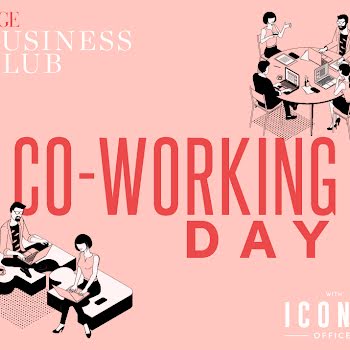
Overactive Bladder (OAB): How do I know I have it and what can I do about it?
By Jennifer McShane
22nd Feb 2020
22nd Feb 2020
New research has shown that Irish people are rather shy when it comes to issues surrounding their bladder, so much so, we refrain from seeking medical help. Among some of the findings, Always Discreet have found that we’ve learned that two-thirds of women in Ireland experience bladder leaks. More studies found one in three people are too embarrassed to seek medical help for overactive bladder (OAB) and a staggering 87% of people don’t seek help from their GP when it first occurs. What’s more, we’re rather clueless when it comes to issues surrounding this part of our body; 1 in 2 Irish people don’t know what OAB is and over 60% of people don’t know that effective OAB treatment exists, and we’re vastly unaware of how important our pelvic floor muscles are when it comes to strengthening our bladder.
In a bid to learn more, we’ve consulted the help of expert physiotherapist, Maeve Whelan, who walks us through the various tips on how to strengthen the pelvic floor muscles and the myriad ways to manage the symptoms and reduce the burden of OAB.
1. What are the symptoms of OAB? How can you tell that you have it?
- The sudden and urgent need to go to the toilet
- If you are unable to control your bladder and if your bladder controls you
- If you go to the toilet more than 8 times in a 24 hour period
2. Can you have a phase of OAB that goes away?
Yes, this can be caused by urinary tract infections. These can spontaneously resolve if only mild; you may well respond to natural remedies or you may need an antibiotic from your GP.
3. Why is it so common?
It is associated with pregnancy and childbirth and it can be part of the ageing process and also with many medical conditions and, in fact, it can be associated with postural changes holding patterns and pain conditions.
4. What causes it?
Causes are frequently unknown, but the bladder muscle contracts too early and with volumes that are too small giving a message to the brain that you urgently need to relieve yourself.
5. What can women do to lessen their chances of it developing or worsening?
Start early bladder retraining with your pelvic floor muscles; learn how to expand the bladder and get past those early strong urges on small volumes; use the pelvic floor muscle CORRECTLY to help with this bladder retraining; change the postural habits that feed into the negative holding patterns around the pelvis that would get in the way of good bladder retraining; learn about fluid volumes?and go easy on: tea / coffee / fizzy drinks / acidic fruits / tomatoes
6. We need Irish people to feel comfortable about going to their GP if they’re concerned that they have this, do you think there’s a fear around it?
There is a taboo, an embarrassment, a fear of exposure around it that there should not be. When it is explained to them they feel much better and have more of an understanding of what is happening. It is the not knowing that is the problem; once they know then the control over their problem comes back and the fear goes away. Education really helps.
7. Is it a major cause for concern, can it lead to further illness?
It can’t lead to further illness as such but the bladder can change over time and the longer the problem is there the more difficult it is to solve it as a problem so the message most definitely is to get it sorted now!
8. What are the treatment options?
- Bladder training to improve bladder capacity and reduce frequency
- Pelvic floor exercises to improve control
- Postural exercises to avoid negative holding patterns in the body
- Drug therapy to treat the bladder muscle
- Education
9. How important are pelvic floor exercises? What is the role of our pelvic floor muscle?
Pelvic floor muscles can be very useful by contracting very specifically up into the neck of the bladder and controlling the powerful reflexes that are contributing to those strong bladder urges. When the pelvic floor muscles are correctly contracted then the bladder muscle will in turn relax and continue filling allowing you to either go and do something else or get to the toilet in time.
10. Exactly what kind of exercises work here?
When you are exercising for control, the exercises should be first positional. Stop and stand still or sit and lean forwards applying pressure to the pelvic floor. Then contract the pelvic floor muscles. Contract from the back all the way up towards the bladder at the front and relax the breathing and keep holding for up to a minute. Don’t brace or tighten your tummy as that might put pressure on the bladder. If sitting isn’t possible then stand up on your toes. This can be a great way of controlling those strong bladder reflexes. Keep contracting and breathing and wait for the urge to subside.
11. How do we know we’re exercising the right muscle?
It is hard to know. Press your tummy and check that it is not doing all the work. Make sure you are not blocking your breath or chest lifting. You can examine yourself with one or two fingers and see if anything is happening. Ideally, if you could access a Chartered Physiotherapist through the Irish Society of Chartered Physiotherapists who works in this area then you would get some help and really know that you are doing it correctly. Up to 50% of some contract their pelvic floor incorrectly.
12. How often should we be doing this?
Practice your exercises 10 repetitions three times per day, holding the muscles for 10 seconds each time and then you will successfully be able to apply the muscle contraction when the urge comes on.
13. Beyond reducing the effects of OAB, what other benefits are there?
With pelvic floor exercises, they work as part of your core control. Balance is important. Posture is key with this as well. Young people often over-hold with exercise eg Boot Camp and Pilates and older people often have postural holding patterns that have a negative effect on abdomen, pelvis and pelvic floor. As physiotherapists, we often find that when we start addressing OAB we find these tight abdominal muscles and tight pelvic muscles in young, middle-aged and older people and when we address them we also gain improvements in posture so it is win-win!
Visit www.oab.ie where your every question can be answered; if you’re at all concerned that you’re dealing with it.
Main photograph: Unsplash























